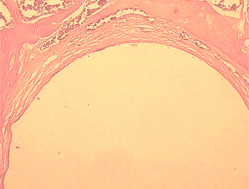Sol–gel coatings for protection and bioactivation of metals used in orthopaedic devices
Abstract
The aim of this work is the production and characterisation of sol–gel coatings for protection and bioactivation of metals used as standard surgical implant materials, such as stainless steel 316 L (ASTM F138), Co based alloys (ASTM F75) and titanium alloy Ti-6Al-4V (ASTM F67). These films should both prevent degradation of the substrates by wear or corrosion, and bioactivate the material for inducing the formation of a hydroxyapatite (HA) rich layer onto the material surface, thereby permitting a natural bonding to living tissues. Formation of HA layers can be observed on performing in vitro tests by soaking the material in simulated body solutions. The work describes the development of coatings containing bioactive glass and glass-ceramic particles in hybrid

- This article is part of the themed collection: New developments in bio-related materials

 Please wait while we load your content...
Please wait while we load your content...